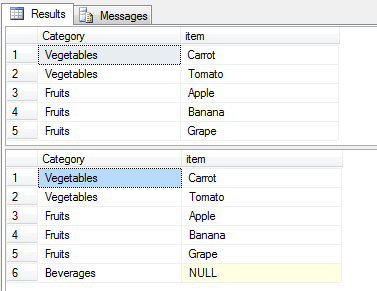Introduction
In this tip, we will see what is Apply operator in SQL Server and how it works.
Using the Code
The Apply operator acts like a Join without the ON clause. The Apply function in a query that allows you to join a table to a table-valued function in such a way that function is invoked for each row returned from the table which you can't do with Join and is the main difference between Join and Apply.
Apply operator can be used in two ways: Cross and Outer.
- The
Cross Apply only returns rows from the left side table if the table-valued-function returns rows. - The
Outer Apply clause returns all the rows of the left side table regardless of whether table-valued-function returns any row or not. If no row is returned by table-valued-function, the columns that the table-valued-function returns are null.
Let's take an example to understand in more detail.
split function before running the below snippet.
declare @tab table(Category varchar(20), item varchar(max))
insert into @tab
select 'Vegetables', 'Carrot,Tomato' union all
select 'Fruits', 'Apple,Banana,Grape' union all
select 'Beverages', null
select t.Category, s.val as item
from @tab t
cross apply dbo.split(item, ',') s
select t.Category, s.val as item
from @tab t
outer apply dbo.split(item, ',') s
Look at the output.

- First output with Cross Apply: No row with Category "
Beverages" in the output - Second output with Outer apply: Getting a row with Category "
Beverages" in the output
Reason for Difference
Function is returning null value for Category "Beverages" because there is null value in item column for "Beverages".
